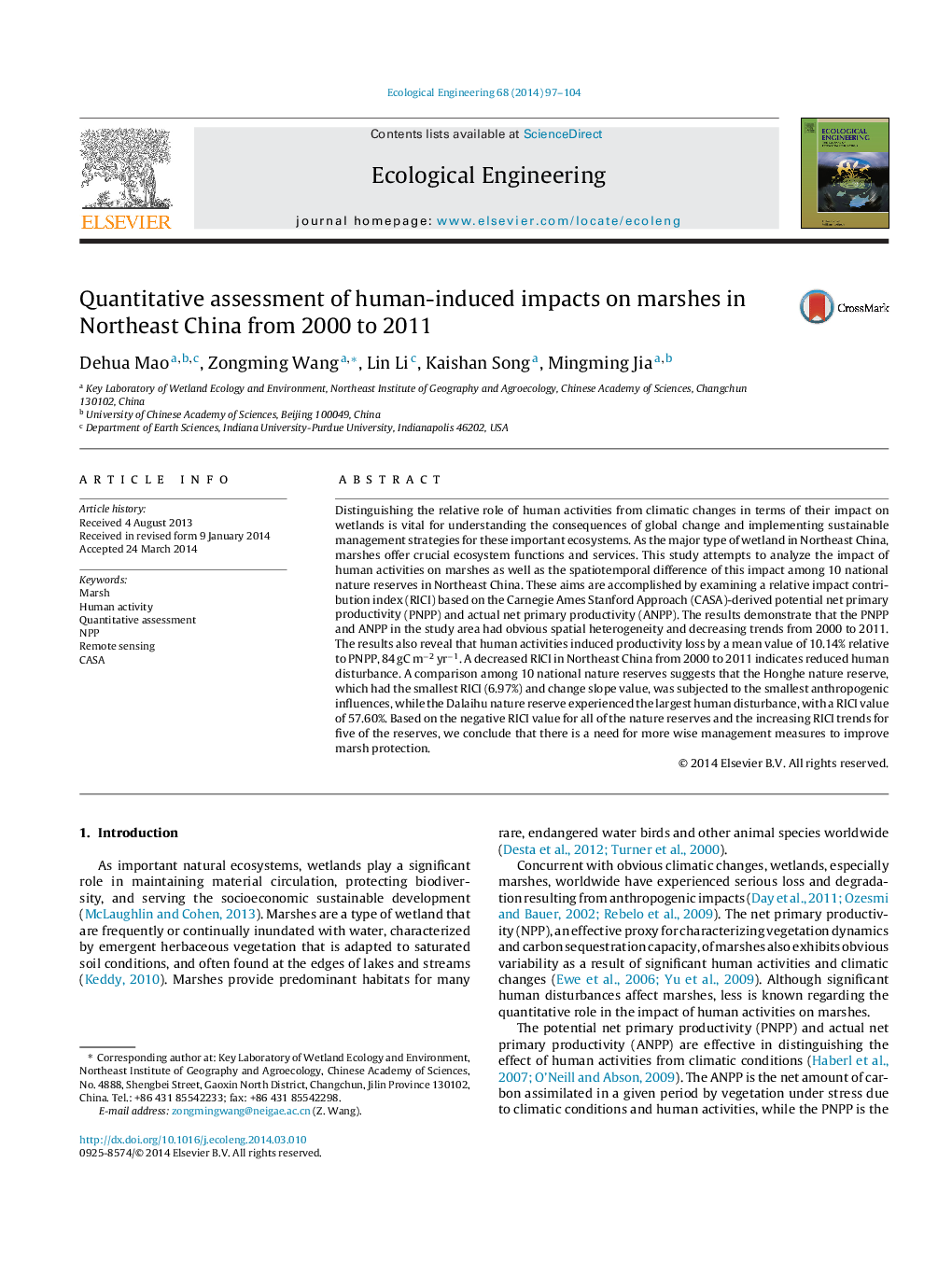| Article ID | Journal | Published Year | Pages | File Type |
|---|---|---|---|---|
| 6302290 | Ecological Engineering | 2014 | 8 Pages |
Abstract
Distinguishing the relative role of human activities from climatic changes in terms of their impact on wetlands is vital for understanding the consequences of global change and implementing sustainable management strategies for these important ecosystems. As the major type of wetland in Northeast China, marshes offer crucial ecosystem functions and services. This study attempts to analyze the impact of human activities on marshes as well as the spatiotemporal difference of this impact among 10 national nature reserves in Northeast China. These aims are accomplished by examining a relative impact contribution index (RICI) based on the Carnegie Ames Stanford Approach (CASA)-derived potential net primary productivity (PNPP) and actual net primary productivity (ANPP). The results demonstrate that the PNPP and ANPP in the study area had obvious spatial heterogeneity and decreasing trends from 2000 to 2011. The results also reveal that human activities induced productivity loss by a mean value of 10.14% relative to PNPP, 84Â gCÂ mâ2Â yrâ1. A decreased RICI in Northeast China from 2000 to 2011 indicates reduced human disturbance. A comparison among 10 national nature reserves suggests that the Honghe nature reserve, which had the smallest RICI (6.97%) and change slope value, was subjected to the smallest anthropogenic influences, while the Dalaihu nature reserve experienced the largest human disturbance, with a RICI value of 57.60%. Based on the negative RICI value for all of the nature reserves and the increasing RICI trends for five of the reserves, we conclude that there is a need for more wise management measures to improve marsh protection.
Related Topics
Life Sciences
Agricultural and Biological Sciences
Ecology, Evolution, Behavior and Systematics
Authors
Dehua Mao, Zongming Wang, Lin Li, Kaishan Song, Mingming Jia,
